15 years one-stop China custom CNC machining parts factory
 720 |
Published by VMT at Feb 07 2025 | Reading Time:About 5 minutes
720 |
Published by VMT at Feb 07 2025 | Reading Time:About 5 minutes
Choosing the right metal for your CNC machining parts can be overwhelming. Brass, aluminum, and stainless steel each have unique advantages and drawbacks, influencing performance, durability, and cost. Selecting the wrong material can lead to machining difficulties, poor product performance, or unnecessary expenses.
But which one should you choose?
Understanding their differences in chemical composition, strength, corrosion resistance, machinability, and applications is essential. This guide provides an in-depth comparison, helping you make an informed decision based on your specific requirements.
Quick Comparison of Brass, Aluminum, and Stainless Steel
Brass, aluminum, and stainless steel differ in composition, corrosion resistance, strength, and machinability. Brass offers excellent electrical conductivity and corrosion resistance, aluminum is lightweight and highly machinable, while stainless steel provides superior strength and durability. Each material is ideal for specific CNC prototype machining and custom CNC machining applications.
Now that we have a broad overview, let’s dive deeper into the properties of each metal. By understanding their unique characteristics, you’ll be able to select the best material for your CNC machining factory or CNC machining services.
Brass, Aluminum, and Stainless Steel: Exploring the Differences Between Them
What is Brass?
Brass is an alloy of copper and zinc, known for its golden appearance, corrosion resistance, and excellent machinability. The ratio of copper to zinc determines its properties—higher copper content increases corrosion resistance, while more zinc improves strength and hardness. Brass is widely used in CNC machining services due to its ease of machining, making it ideal for brass CNC machining parts, including fittings, valves, and electrical components.
Brass is valued for its high electrical conductivity, low friction, and antibacterial properties, making it a preferred choice for marine applications, plumbing, musical instruments, and watchmaking. Additionally, its non-magnetic nature makes it suitable for applications requiring minimal electromagnetic interference.
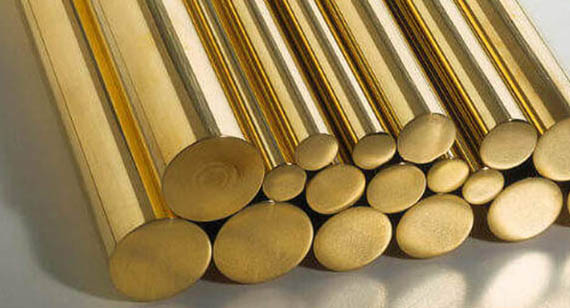
What is Aluminum?
Aluminum is a lightweight, corrosion-resistant metal commonly used in CNC prototype machining and custom CNC machining. It is highly malleable, allowing for the easy formation of complex shapes while maintaining high strength-to-weight ratio. Unlike brass, aluminum naturally forms a protective oxide layer, enhancing its resistance to rust and corrosion.
Aluminum CNC machining parts are prevalent in automotive, aerospace, medical, and electronics industries due to aluminum’s low density, excellent thermal conductivity, and cost-effectiveness. Furthermore, aluminum is non-toxic and recyclable, making it a sustainable choice for environmentally conscious applications.
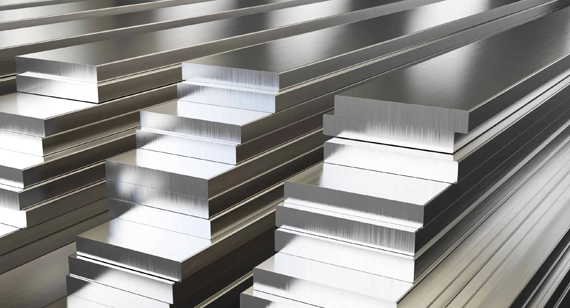
What is Stainless Steel?
Stainless steel is an iron-based alloy containing at least 10.5% chromium, which gives it exceptional corrosion resistance and durability. Additional alloying elements like nickel, molybdenum, and carbon further enhance its strength, toughness, and heat resistance. Stainless steel is highly versatile and used in various industries, including construction, medical, food processing, and marine engineering.
Unlike brass and aluminum, stainless steel offers higher tensile strength, superior durability, and excellent resistance to harsh environments. However, stainless steel CNC machining parts are generally more challenging to machine due to their hardness, requiring specialized tools and techniques for efficient processing.
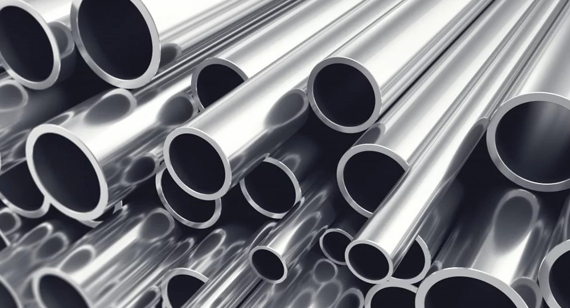
Brass, Aluminum, and Stainless Steel: A Detailed Comparison
Choosing the right metal for CNC machining depends on factors like strength, machinability, corrosion resistance, and cost. Brass, aluminum, and stainless steel are among the most commonly used metals in custom CNC machining, each offering unique properties suited for specific applications. This section explores their available alloys, helping manufacturers and engineers select the best material for their CNC machining services.
Available Alloys
Different alloys within brass, aluminum, and stainless steel have distinct characteristics that affect CNC machining performance, durability, and cost-efficiency. Below is an overview of their most commonly used alloys.
Brass Alloys
Brass is an alloy of copper and zinc, offering excellent machinability, corrosion resistance, and an attractive golden appearance. The specific ratio of copper to zinc influences its mechanical properties, making different brass alloys suitable for applications like electrical terminals, fittings, and decorative hardware.
Alloy 260 (Cartridge Brass)
Alloy 272 (Yellow Brass)
Alloy 330 (Lead-Free Brass)
Alloy 353 (High-Leaded Brass)
Alloy 360 (Free-Cutting Brass)
Alloy 464 (Naval Brass)
Aluminum Alloys
Aluminum alloys are widely used in CNC machining due to their lightweight, high strength-to-weight ratio, and corrosion resistance. They are commonly used in automotive, aerospace, and electronic applications.
Popular Aluminum Alloys for CNC Machining
Alloy 2024 (Aircraft Aluminum)
Alloy 5052 (Marine-Grade Aluminum)
Alloy 6061 (General-Purpose Aluminum)
Alloy 7075 (High-Strength Aluminum)
Stainless Steel Alloys
Stainless steel is an iron-based alloy known for its high strength, corrosion resistance, and durability. Different grades are used for applications like medical instruments, food processing, and CNC prototype machining.
Popular Stainless Steel Alloys for CNC Machining
Alloy 303 (Free-Machining Stainless Steel)
Alloy 304 (Food-Grade Stainless Steel)
Alloy 316 (Marine-Grade Stainless Steel)
Alloy 410 (Hardened Stainless Steel)
Alloy 440C (High-Carbon Stainless Steel)
Conclusion
Each metal—brass, aluminum, and stainless steel—offers a range of alloys that cater to specific CNC machining requirements. Whether you need lightweight aluminum parts, corrosion-resistant brass fittings, or high-strength stainless steel components, choosing the right alloy ensures optimal performance in your project.
When selecting materials for CNC machining, it is crucial to understand their mechanical, physical, and chemical properties. Brass, aluminum, and stainless steel are three of the most widely used metals in manufacturing, each offering unique advantages in strength, corrosion resistance, machinability, weight, and conductivity.
This guide provides an in-depth comparison of these materials, exploring their composition, mechanical properties, electrical and thermal conductivity, durability, machinability, and cost. By understanding these differences, manufacturers can make informed decisions when choosing the ideal material for custom CNC machining, prototype development, and large-scale production.
Elemental Composition
The chemical composition of a metal defines its strength, corrosion resistance, machinability, and durability. Let’s examine how brass, aluminum, and stainless steel differ at the elemental level.
Brass
Aluminum
Stainless Steel
Corrosion Resistance
Brass
Aluminum
Stainless Steel
Durability
Brass
Aluminum
Stainless Steel
Weight
Brass
Aluminum
Stainless Steel
Machinability
Brass
Aluminum
Stainless Steel
Weldability
Brass
Aluminum
Stainless Steel
Electrical and thermal conductivity play a crucial role in selecting materials for CNC machining applications. Brass, aluminum, and stainless steel each exhibit different levels of conductivity, making them suitable for distinct applications such as electronic components, heat exchangers, and structural parts. This section explores the electrical and thermal properties of these metals, providing insights into their suitability for various engineering and industrial applications.
Electrical Conductivity
Brass
Aluminum
Stainless Steel
Thermal Conductivity
Brass
Aluminum
Stainless Steel
The strength of a material determines its ability to withstand stress, pressure, and deformation. In CNC machining, selecting the right material based on its tensile strength, yield strength, and hardness ensures optimal performance in load-bearing, high-impact, and structural applications.
Tensile Strength
Brass
Aluminum
Stainless Steel
Yield Strength
Brass
Aluminum
Stainless Steel
Formability
Brass
Aluminum
Stainless Steel
Melting Point
| Material | Melting Point (°C) | Melting Point (°F) |
| Brass | 900-940°C | 1652-1724°F |
| Aluminum | 660°C | 1220°F |
| Stainless Steel | 1400-1550°C | 2552-2822°F |
Brass has a moderate melting point, making it easy to cast and shape. Aluminum has the lowest melting point, which allows for rapid casting and welding. Stainless steel has the highest melting point, making it suitable for high-temperature environments.
Look and Feel
Color
Hardness
| Material | Brinell Hardness (HB) |
| Brass | 55-90 HB |
| Aluminum | 15-150 HB |
| Stainless Steel | 120-600 HB |
Stainless steel is the hardest, making it scratch-resistant and durable. Aluminum is the softest, requiring protective coatings in high-wear applications.
Pricing and Options
Cost Comparison
| Material | Cost | Machinability | Durability | Corrosion Resistance |
| Brass | $$ | Excellent | Good | Moderate |
| Aluminum | $ | Very Good | Moderate | Excellent |
| Stainless Steel | $$$ | Difficult | Excellent | Excellent |
Conclusion
Each material—brass, aluminum, and stainless steel—has unique properties that make them suitable for different applications. If you need lightweight components with excellent conductivity, aluminum is the best choice. If durability and corrosion resistance are the priority, stainless steel is ideal. For aesthetic and electrical applications, brass is a great option.
Choosing the right material for CNC machining applications depends on factors like strength, corrosion resistance, conductivity, and aesthetics. Brass, aluminum, and stainless steel serve diverse industries, from electronics and plumbing to aerospace and medical equipment. Understanding their applications can help manufacturers select the best material for their specific needs.
This section explores how these metals are used in various industries, highlighting their advantages and practical applications.
Applications of Brass
Brass, an alloy of copper and zinc, is valued for its corrosion resistance, electrical conductivity, and aesthetic appeal. Its machinability and durability make it ideal for plumbing, electrical components, musical instruments, and decorative applications.
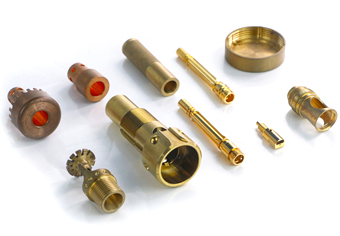
Plumbing Materials
Brass is widely used in plumbing systems due to its resistance to corrosion and water damage. It does not rust like steel and is more durable than plastic.
Common Applications:
Fittings
Brass fittings provide tight seals and excellent pressure resistance, making them ideal for gas, water, and oil systems.
Common Applications:
Electronic and Electrical Terminals
Brass has moderate electrical conductivity, making it ideal for electrical connectors and terminals where high strength and corrosion resistance are required.
Common Applications:
Musical Instruments
Brass is commonly used in musical instruments because of its unique acoustic properties and ability to produce a rich, resonant tone.
Common Applications:
Watch and Clock Parts
Brass is an essential material in watch and clock manufacturing due to its durability, corrosion resistance, and aesthetic appeal.
Common Applications:
Applications of Aluminum
Aluminum is known for its lightweight nature, excellent corrosion resistance, and high thermal and electrical conductivity. It is widely used in automotive, aerospace, electronics, and consumer goods industries.
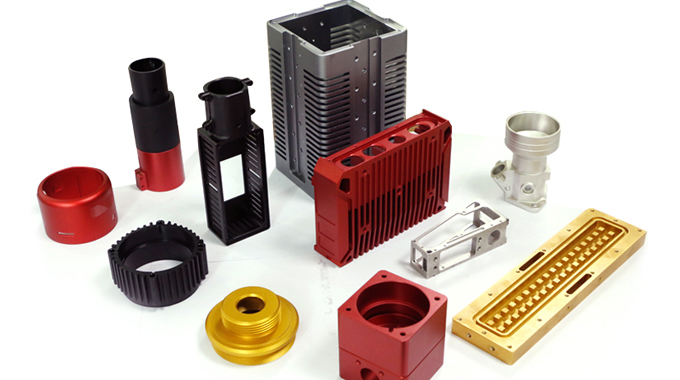
Parts for Aluminum Applications
Aluminum is a versatile material used in industries requiring lightweight, strong, and corrosion-resistant components.
Common Applications:
Applications of Stainless Steel
Stainless steel is valued for its exceptional strength, corrosion resistance, and durability. It is used in industries requiring hygienic, high-strength, and heat-resistant components, including medical, aerospace, and food processing applications.
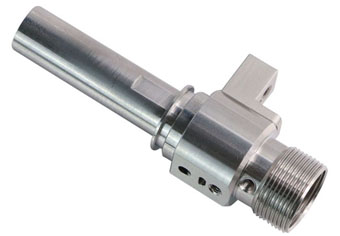
Parts for Stainless Steel Applications
Common Applications:
Conclusion
Each material—brass, aluminum, and stainless steel—offers unique benefits that make them ideal for specific applications.
For custom CNC machining services, selecting the right material ensures optimal performance and cost-effectiveness. Need help choosing the best metal for your project? Contact VMT CNC Factory for expert guidance!
When selecting materials for CNC machining, understanding their benefits is crucial. Brass, aluminum, and stainless steel each offer distinct advantages, from durability and corrosion resistance to aesthetics and machinability. Whether for industrial components, decorative applications, or precision engineering, choosing the right material ensures optimal performance, cost-effectiveness, and longevity.
This section explores the key benefits of these three metals and how they can enhance various manufacturing processes.
Benefits of Brass
Brass, an alloy of copper and zinc, is known for its excellent machinability, corrosion resistance, and conductivity. It is widely used in plumbing, electrical components, and decorative applications.
1. Durability
Brass is highly resistant to corrosion and wear, making it ideal for long-term applications. It does not rust and can withstand harsh environments, including exposure to moisture and chemicals.
2. Antibacterial Properties
Brass naturally inhibits bacterial growth, making it an excellent choice for medical instruments, plumbing fixtures, and food-related applications. Its antimicrobial nature helps reduce the spread of germs, especially in high-contact areas.
3. Aesthetics
With its golden appearance, brass is often used for decorative applications such as architectural elements, musical instruments, and luxury hardware. It offers a classic, elegant look that enhances product appeal.
4. Electrical Conductivity
While not as conductive as copper, brass is widely used in electronic and electrical applications where a balance of conductivity and mechanical strength is required.
5. Excellent Machinability
Brass is one of the easiest metals to machine, reducing tool wear and production time. This makes it highly cost-effective for custom CNC machining services.
Benefits of Aluminum
Aluminum is a lightweight, corrosion-resistant, and highly versatile metal. It is commonly used in aerospace, automotive, and electronic industries due to its exceptional properties.
1. Lightweight and High Strength
Aluminum has an excellent strength-to-weight ratio, making it ideal for automotive, aerospace, and structural applications where weight reduction is essential.
2. Corrosion Resistance
Naturally forming an oxide layer, aluminum resists rust and corrosion, making it suitable for outdoor and marine applications.
3. Thermal and Electrical Conductivity
Aluminum is an efficient conductor of heat and electricity, making it perfect for electronics, heat sinks, and electrical components.
4. Non-Magnetic and Non-Sparking
Aluminum is non-magnetic and does not produce sparks, making it useful in electronics and hazardous environments where magnetic interference is an issue.
5. Recyclability
Aluminum is 100% recyclable without losing its properties, making it a sustainable choice for environmentally-conscious industries.
Benefits of Stainless Steel
Stainless steel is known for its superior strength, corrosion resistance, and durability. It is widely used in medical, food processing, and industrial applications due to its reliability and ease of maintenance.
1. Exceptional Corrosion Resistance
Stainless steel resists rust, oxidation, and chemical corrosion, making it ideal for harsh environments, including marine and industrial settings.
2. Strength and Durability
With high tensile and yield strength, stainless steel is preferred for high-stress applications such as bridges, skyscrapers, and aerospace components.
3. Heat and Fire Resistance
Stainless steel maintains its structural integrity at high temperatures, making it ideal for heat exchangers, furnaces, and industrial processing equipment.
4. Hygienic and Easy to Clean
Its non-porous surface prevents bacteria buildup, making stainless steel perfect for medical, food, and pharmaceutical industries where cleanliness is critical.
5. Aesthetic and Polished Finish
Stainless steel provides a modern, sleek appearance, often used in high-end appliances, kitchenware, and architectural designs.
Choosing the right material depends on your specific needs:
Each metal has its own advantages in custom CNC machining, and selecting the right one ensures efficiency, cost-effectiveness, and performance.
At VMT CNC Factory, we specialize in precision CNC machining services for brass, aluminum, and stainless steel parts. Our expertise in CNC prototype machining, custom CNC machining, and high-precision metal fabrication ensures that we deliver top-quality parts tailored to your requirements.
Why Choose VMT?
✅ State-of-the-art CNC machining technology
✅ High-precision manufacturing for complex designs
✅ Fast lead times and competitive pricing
✅ Expertise in various metal alloys for different industries
Need custom brass CNC machining parts, aluminum CNC machining parts, or stainless steel CNC machining parts? Contact VMT CNC Factory today for a quote and consultation!
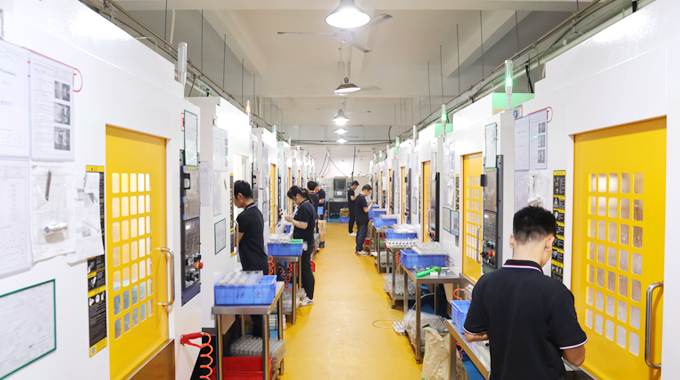
Which is better, Brass, Aluminum or Stainless Steel?
Each of these metals offers unique advantages depending on the application. Brass excels in aesthetics, machinability, and corrosion resistance, making it ideal for decorative and plumbing components. Aluminum is lightweight, corrosion-resistant, and highly conductive, making it perfect for aerospace, automotive, and electronic industries. Stainless steel is known for its strength, durability, and corrosion resistance, which makes it the best choice for medical, industrial, and high-stress applications.
Which is cheaper, Brass or Aluminum?
In general, aluminum is cheaper than brass. Aluminum’s cost-effectiveness makes it more suitable for large-scale projects or applications that require lightweight material at a lower price. Brass, while more expensive, is often chosen for its aesthetic appeal and antibacterial properties.
Which is better, Brass or Stainless Steel?
The choice between brass and stainless steel depends on the application. Brass is ideal for plumbing and decorative items due to its machinability and aesthetic look. Stainless steel, on the other hand, is superior in terms of strength, corrosion resistance, and high-temperature durability, making it better suited for heavy-duty industrial and medical applications.
Which is better, Aluminum or Stainless Steel?
Aluminum is better for applications requiring a lightweight material that is also highly conductive (such as electronics and aerospace). Stainless steel offers better strength, durability, and corrosion resistance, making it ideal for high-stress environments like industrial, medical, and construction industries.
Which is better, Stainless Steel or Brass?
If you are looking for strength and corrosion resistance in harsh environments, stainless steel is the superior choice. However, if machinability, aesthetic appeal, and corrosion resistance are more important, brass would be the better option for applications such as plumbing fittings and decorative components.
Does Aluminum or Stainless Steel last longer?
In terms of longevity, stainless steel lasts longer, particularly in high-temperature and corrosive environments. It is more resistant to rust and oxidation than aluminum, making it suitable for heavy-duty and long-lasting applications.
Why is Steel better than Aluminum?
Steel is stronger and more durable than aluminum, making it the better option for high-load applications that require superior tensile strength and resistance to wear. Aluminum, however, is lighter and more ductile, so it’s better suited for applications that prioritize weight reduction.
Which Cookware is better, Aluminum or Stainless Steel?
Both materials are commonly used for cookware, but they serve different needs:
Does Aluminum Rust?
No, aluminum does not rust. Instead, it forms a protective oxide layer when exposed to oxygen, which helps protect it from further corrosion. However, if the oxide layer is damaged, aluminum can corrode.
Will Brass Rust?
Brass does not rust because it is an alloy of copper and zinc. However, it can tarnish over time when exposed to air and moisture, resulting in a patina that can be removed with cleaning. It’s more corrosion-resistant than many metals but still vulnerable to oxidation.
Why does aluminum turn yellow?
Aluminum turns yellow due to the formation of oxide layers or chemical reactions with certain substances, like oils or alkalines. If not cleaned properly, these layers may become visible, creating a yellowish tint.
Which rusts faster, steel or aluminum?
Steel (non-stainless) rusts faster than aluminum because steel is more prone to oxidation in the presence of moisture and air. Aluminum, on the other hand, naturally forms an oxide layer that helps protect it from further corrosion.
Which is more expensive, steel or aluminum?
In general, steel is more expensive than aluminum due to its higher strength, complex manufacturing processes, and materials. However, for lightweight applications, aluminum may be a cost-effective option.
What causes aluminum to turn black?
Aluminum can turn black due to a process called anodizing, where the surface layer of the metal reacts with air or acid. This creates a blackened oxide layer that is often used for aesthetic or protective purposes in industrial applications.
Which metal is most likely to rust?
Steel (especially carbon steel) is most likely to rust, as it is highly susceptible to oxidation when exposed to moisture and air. Stainless steel, aluminum, and brass are much more resistant to rust and corrosion.
Is brass better for water than stainless steel?
Brass is often preferred for water-related applications, such as plumbing fittings and valves, because of its machinability, corrosion resistance, and ability to withstand constant exposure to moisture. However, stainless steel is often used for high-pressure or high-temperature water systems due to its superior strength and durability. Both materials have unique advantages in different types of water systems.
